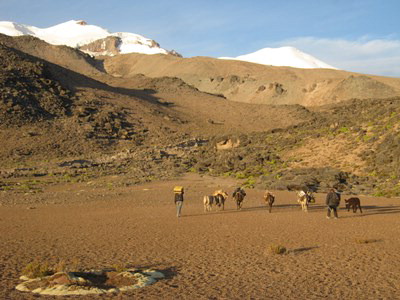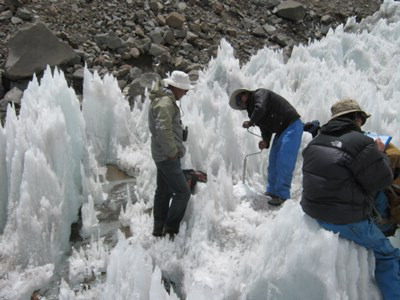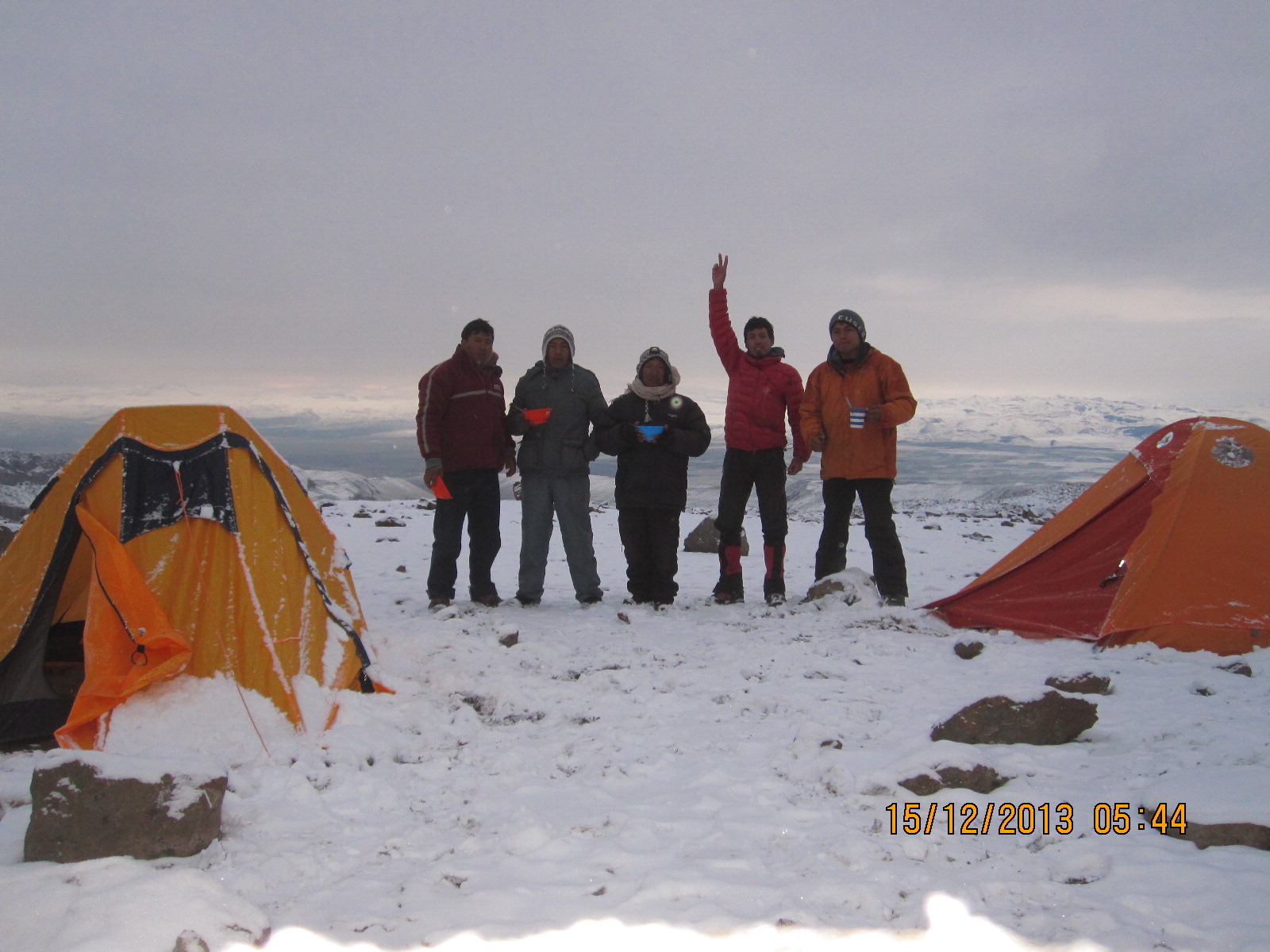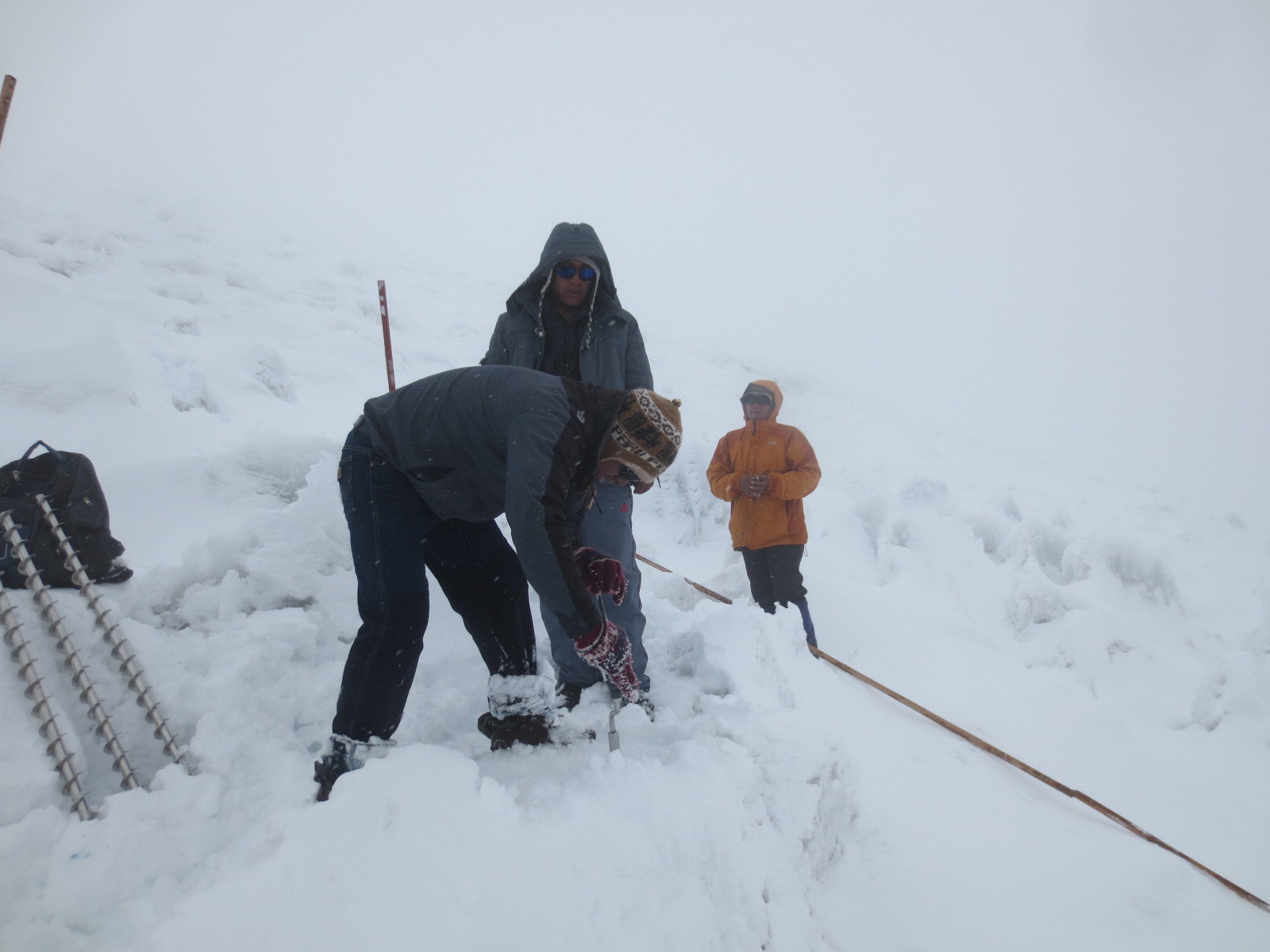Cycle 1 (2011 Deadline)
Building Peruvian capacity for monitoring and modeling the effects of climate change on the Coropuna Glacier and associated watersheds in Arequipa, Peru PIs: Roberto Zegarra Balcazar and Felio Carderon La Torre, (former PIs Karen Kraft and Julio F. Alegría), Asociacion Especializada para el Desarrollo Sostenible (AEDES) U.S. Partners: Joerg Schaefer, Columbia University, and Gordon Bromley, University of Maine
Project Dates: June 2012 - April 2015 Project Overview Peru is especially vulnerable to the effects of climate change due to the dependence of 70 percent of its population on glacier water in the dry season. However, at the time the project began, Peru lacked an integrated vision to build climate change resilience through linking investigation, local knowledge, and decision-making. In this project, AEDES partnered with the Lamont-Doherty Earth Observatory of Columbia University with the goal of building Peru’s capacity for monitoring and modeling local climate change in its Pacific Basin.
The team sought to improve data collection and analysis through practical training, fostering knowledge and data exchanges between national and international scientists, and contributing to more robust modeling of climate change scenarios near Coropuna volcano complex and its associated glacier. The data collected by local researchers will contribute to local models to help decision makers better prepare themselves for changing climate conditions and provide the international research and policy community with vital information for understanding the sensitivity of tropical glaciers.

Monitoring campaign of the southern front of Coropuna. Photo courtesy of Dr. Julio Alegria. | 
Installation of wooden stakes in the axis of the glacier. Photo courtesy of Dr. Julio Alegria. |
Final Summary of Project Activities Researchers carried out a series of joint data collection and field-based trainings and maintained periodic monitoring of glacier mass and hydrological data. The PEER grant team installed a new automatic weather and hydrology station on Coropuna, 5800 meters above sea level, located in the glacier Cavalca, which should enhance data accuracy. They worked in cooperation with the glaciological unit of the National Water Authority, Environment Ministry (MINAM) and the National Service of Meteorology and Hydrology (SENAMHI). The project provided support for the thesis research and training of two Peruvian master's degree students and the team organized workshops on climate change adaptation, glaciers and hydrology in the southern Andes. Please see http://www.senamhi.gob.pe/?p=1500 for SENAMHI’s announcement (in Spanish) and photograph of the station and team members and http://laprensa.peru.com/actualidad/noticia-senamhi-instala-estacion-meteorologica-mas-alta-america-32070 for a sample of Peruvian press coverage of the event (also in Spanish). A brief video about the installation is available at https://www.youtube.com/watch?v=EInkAEBc4Ts&feature=youtu.be. 
AEDES technical team performing fieldwork in Tuailqui Glacier, south flank of Coropuna, December 2013. Photo courtesy of Dr. Julio Alegria | 
Installing wooden stakes in Maukallaqta Glacier, north flank of Coropuna. Photo courtesy of Dr. Julio Alegria. |
Back to PEER Cycle 1 Grant Recipients
| 






